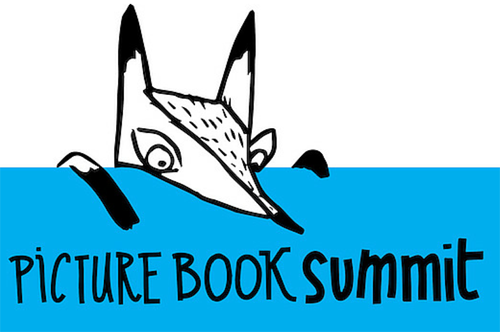
The 2017 Caldecott Winner and Honorees
Join Emma Walton Hamilton, Laura Backes, Julie Hedlund, and Katie Davis as they discuss and review the 2017 Caldecott Award Winner and Honorees!
2017 winner and honorees are:
Caldecott Medal Winner
Radiant Child by Javaka Steptoe
Caldecott Honor Books
Du Iz Tak by Carson Ellis
Freedom in Congo Square by Carole Boston Weatherford and R. Gregory Christie
Leave Me Alone by Vera Brosgol
They All Saw a Cat by Brendan Wenzel
Our team talks about each one of these books, breaking down the art and the words. Plus, we review the rules for the Caldecott; many of these guidelines might be surprising. Each one of these are broken down so you can get started with your own analysis of your favorite picture books. Then you can apply some of these techniques to your own art and writing!
Part 1 – The Caldecott Criteria
Listen up as Emma Walton Hamilton explains the Caldecott rules. If you’ve ever wondered why some books are selected over others, here’s why: the Caldecott rules are specific in what they’re looking for. Emma breaks these rules down so they’re easy to understand.
Part 2 – Radiant Child
2017 Caldecott Winner, Radiant Child by Javaka Steptoe
Laura Backes Bard shares Radiant Child in this video. This picture book is a celebration of Jean-Michel Basquiat’s life and art. Laura has done her homework on both Baquiat and Steptoe’s art and why Steptoe, the author, was brilliant in some of his medium and material choices for this book. Laura and Emma both explain how this book relates so well to the young picture book reader, and why this story is so important. One of the important lessons for readers is that art can be found everywhere around us, encouraging the young readers to look for the art in their lives they might not have noticed before.
Part 3 – Du Iz Tak?
2017 Caldecott Honor Book, Du Iz Tak by Carson Ellis
Julie Hedlund shares one of her all time favorite books this year, Du Is Tak. This groundbreaking, innovative book was likely selected for the honor because of it’s originality. In Du Iz Tak, the illustrations are gorgeous, but it’s also known for the text. The words in this picture book are a completely made-up insect language; there isn’t a single word in here that kids already know. But children like trying to figure out the linguistics, making this an international story that crosses language barriers. The author does all this while still executing a story arch and building interesting characters. Find out more about Julie’s insights in the video!
Part 4 – Freedom in Congo Square
2017 Caldecott Honor Book, Freedom in Congo Square
by Carole Boston Weatherford and R. Gregory Christie
Katie Davis shares insights on Freedom in Congo Square. She breaks down this picture book, focusing on the writing. This book has a dense forward which sets up the story, explaining a bit of the backstory of slavery as it pertains to Congo Square (a real place). Of course, Christie’s art is brilliant: bright, bold and fantastic, but there is a primitive element to it as well. This story is told in couplets and Julie Hedlund shared more details why this story is best told in rhyme. There is a juxtaposition between the bright colors of the story and the horrors slaves experienced, which are included in this book. Katie has many more insights on this picture book, so watch the video to learn more!
Part 5 – Leave Me Alone!
2017 Caldecott Honor Book, Leave Me Alone by Vera Brosgol
Emma Walton Hamilton shares Vera Brosgol’s debut picture book, Leave Me Alone. She likes the rules that Brosgol strategically breaks, the Russian influence, and the humor. Again, this story has original elements that set this story apart. Emma breaks down the writing craft, how it relates to the illustrations, the story arch and more!
Part 6 – They All Saw a Cat
2017 Caldecott Honor Book, They All Saw a Cat by Brendan Wenzel
Julie Hedlund shares amazing insights on They All Saw a Cat, the second honoree book by a debut author. This story seems simple on the surface, but it reaches an audience from babies through tweens. Because of the depth of the layers in the story, the audience picks out new things as they get older. Julie talks about the wisdom in the word choices and how the author built suspense into the story arch. This book is notable because each page features a different style of art work. It’s a fascinating book that draws readers in. Find out more about Julie’s thoughts in the video!
Thank you to everyone who celebrated the Caldecott winner & honorees with us and participated in our giveaway!



